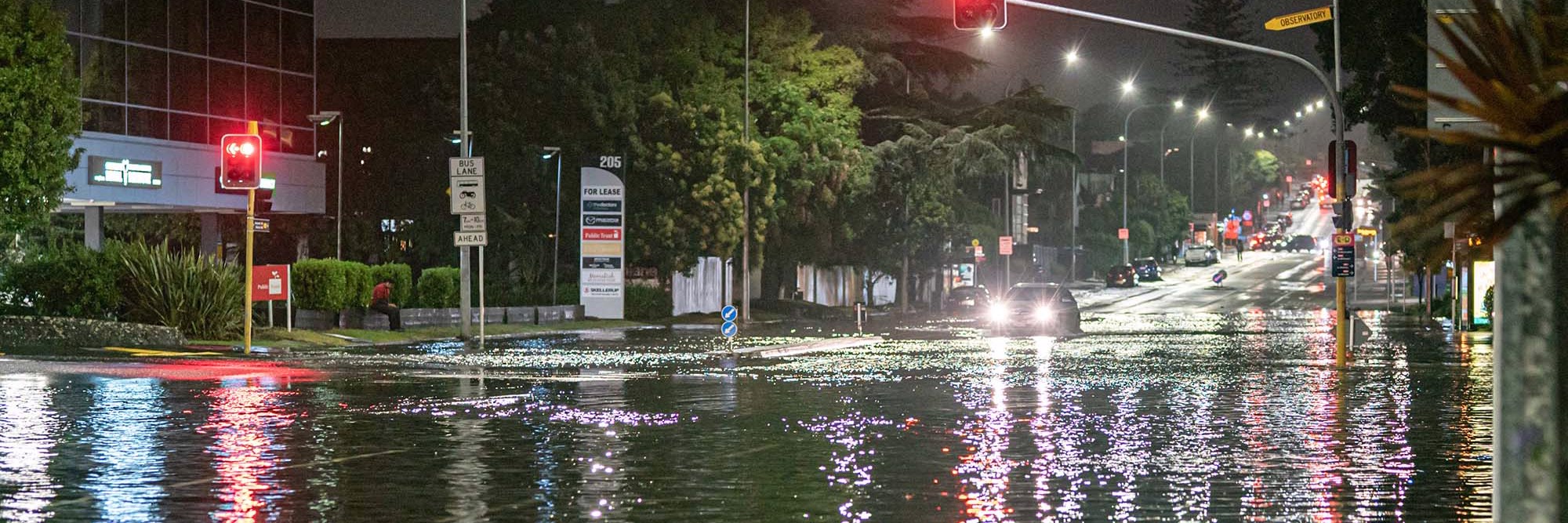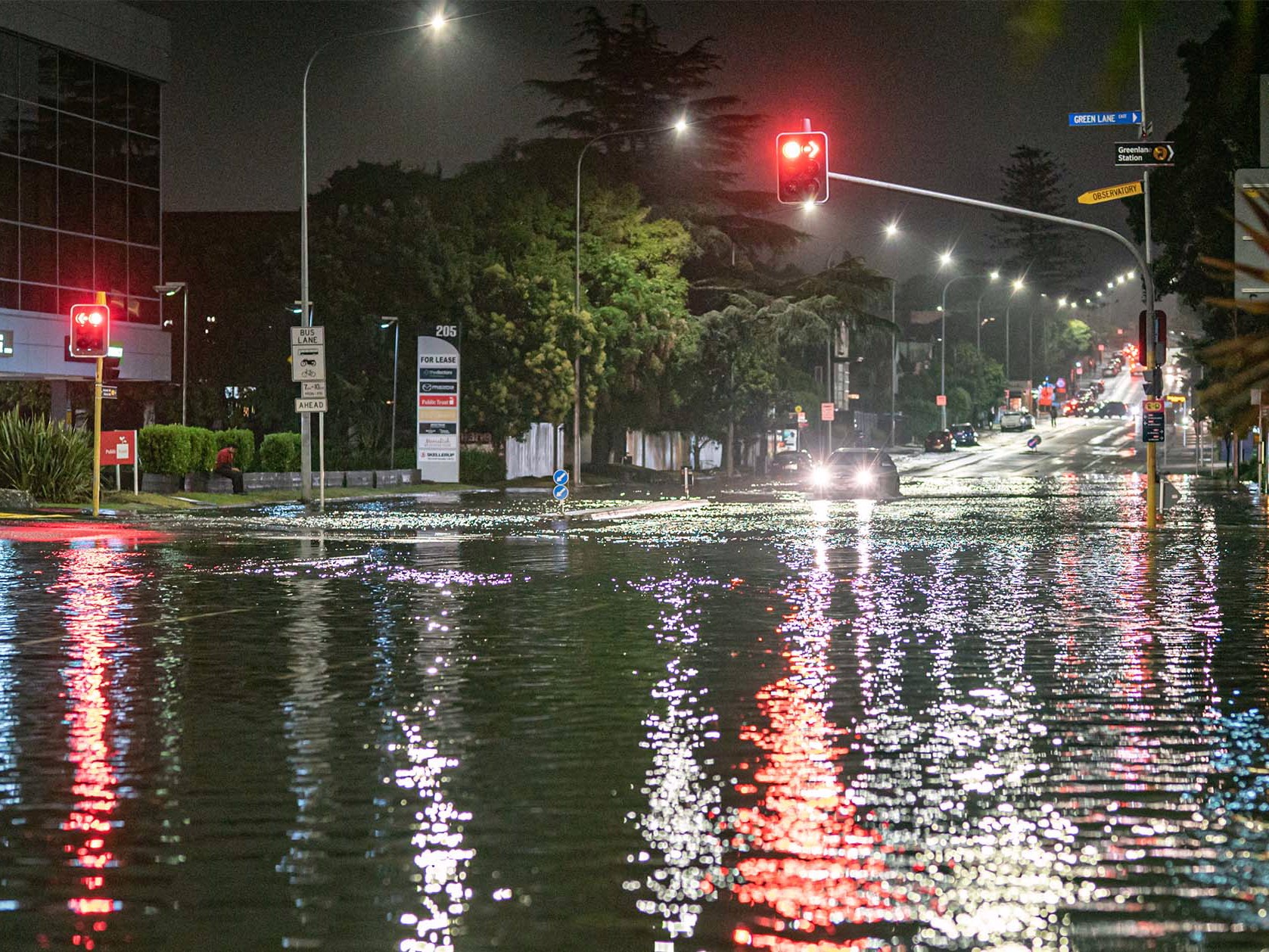The Insurance Council of New Zealand’s latest reporting on the Auckland Anniversary weekend floods and Cyclone Gabrielle describes the extent of the losses suffered.
As of 1 September 2023, insurers had paid out $2.053 billion on these claims, which is expected to increase to $3.5 billion once all claims are settled. This is very significant as it represents the vast majority of insured losses recorded in the Asia-Pacific Region for the first half of 2023.
These events were very destructive, and it seems that the risk of similar events may be increasing. Between 1909 and 2016, New Zealand’s recorded average atmospheric temperature increased by 1.1°C. Continued warming is expected to result in heavier and more concentrated rainfall. It will also increase the frequency and severity of ‘atmospheric rivers’ (plumes of water vapour that travel here from the tropics and turn into rain) and cyclones. Moreover, with sea levels predicted to rise at least 10cm by 2040 and some models predicting greater increases, together with subsidence in land, coastal flooding and damage from storm surges is expected to become more common. This will be an issue particularly in areas with a number of low-lying properties such as Dunedin, Napier, Tauranga and Wellington, where even a minor storm surge can reach properties above the hightide line. Frequent extreme weather events are not just a future problem; they are also a present reality. Prior to the twin disasters earlier this year, the Insurance Council of New Zealand reported that the total amount paid out by insurers for weather-related claims in 2022 had reached a record breaking $335.58 million. For the months of July to August 2022 alone, $123.8 million for weather-related claims had been paid out. This exceeded the provisional estimates for such claims by 35%.
Insurers’ likely response: Partial or full retreat from the market?
While it remains to be seen how insurers will respond to the increased frequency of these claims, it is expected that many homeowners will experience a partial retreat by insurers from the home insurance natural disaster market, which may later be followed by a full retreat. A partial retreat would see insurers introducing terms that shift some risks back on to the insured. Examples include caps on coverage, hazard exclusions and hazard-specific excesses. A full retreat would see insurers refusing to insure properties for natural disaster risks at all because they are deemed to be too high risk.
A partial retreat from the home insurance market occurred following the Canterbury earthquakes. Many insurers replaced uncapped obligations to pay for reinstatement of insured property up to a particular floor area with a promise to pay for reinstatement up to a specified sum insured. This limited insurers’ exposure to unexpected cost increases where natural disasters affected a particular region. Those risks have been shifted to insureds, who are arguably better placed to obtain estimates for the cost of repairing or replacing their own properties in any event.
Similarly, for properties at increasing risk of coastal flooding, it is expected that homeowners will experience a gradual insurance retreat. In the short term, insurance may still be available for excessive rainfall, but storm surges, for example, may be excluded. This may lead to disputes over liability where multiple hazards coincide, such as where rainfall cannot drain due to an earlier storm surge. In four major New Zealand cities (Auckland, Wellington, Christchurch and Dunedin), around 10,230 properties are expected to have experienced a full insurance retreat for flood risks by 2050. Wellington and Christchurch are expected to have done so by the early 2040s, with Dunedin and Auckland following in the late 2040s. Once a full retreat has occurred, prospective purchasers may struggle to obtain mortgages without insurance and existing mortgagors may find themselves in default given their mortgage agreements require them to maintain insurance.
Accompanying a retreat from the home insurance market for natural disaster risks will likely be a significant increase in premiums for at-risk properties. Home insurance premiums rose by an average of 21.2% between the September 2022 and 2023 quarters. Should home insurance become unaffordable, there may be pressure for Government intervention, which has happened in the United Kingdom and in parts of the United States for risks that private insurers have come to regard as unaffordable in certain areas, such as flood and wildfire.
Government intervention?
In the United Kingdom, the increasing unavailability of affordable home insurance for flood risks has been addressed through a Government reinsurance scheme, Flood Re. Established by the Water Act 2014 (UK), Flood Re’s purpose is both to ensure the availability of affordable home insurance for flood risks and to facilitate a transition to risk-reflective pricing by insurers by 2039, at which point the scheme will be disestablished. Flood Re is funded by charging insurers premiums and excesses when they pass a flood risk to the scheme and also by an annual levy on insurers which generates about £135 million per year. A key part of the scheme is Build Back Better, which allows for payouts to owners of flood-damaged homes that not only cover the cost of repairs, but also the cost (up to £10,000) of identifying and implementing flood mitigation measures. Whether a policy offers Build Back Better and the threshold at which it becomes available depends on the individual insurer. The Flood Re scheme is understood to be operating successfully, with 99% of residential properties at high risk of flooding able to obtain quotes from at least 15 insurers.
Similarly, in some American states, including California, Florida and Texas, Fair Access to Insurance Requirements or “FAIR” plans offer limited “insurance of last resort” for residential properties that insurers have declined to insure because they are at a high risk of experiencing severe weather events. Whilst the eligibility requirements differ from state to state, commonly homeowners must show that their property has appropriate risk mitigation measures in place and that at least two insurers have refused to insure it. FAIR plans tend to be funded by premiums rather than the state. If these premiums cannot cover all claims lodged, the FAIR plan administrator may issue assessments requiring either insurers or insureds (depending on the state’s set up) to pay for the outstanding claims. FAIR Plan payouts are often calculated on an actual cash value rather than a replacement cost value, therefore, it is unlikely that a payout will enable a flood resistant rebuild like under Flood Re’s Build Back Better policy.
New Zealand already has a layer of government-backed natural disaster insurance in the form of Toka Tū Ake EQC. Under the Earthquake Commission Act 1993, EQC provides limited state-funded natural disaster insurance known as “EQCover” for residential buildings and residential land up to a maximum of $300,000 plus GST. This is an increase from the previous maximum of $150,000 plus GST.
In 2015, Treasury released a discussion document that drew on learnings from the Canterbury earthquakes to propose changes to the EQC Act. The document identified three areas for improvement. First, the dual insurance model (whereby EQC and insurers jointly contribute to insurance obligations for residential properties) had operated in a way that was unnecessarily costly, confusing and complex. Second, EQC faced institutional challenges, being a small institution that had to adapt quickly in the face of large-scale disasters. Third, the EQC scheme required clarification given there had been inconsistencies in interpretation.
The discussion document favoured EQC’s premium is remaining at a flat rate for the foreseeable future. Risk-differentiated EQC premiums were thought to be incompatible with scheme’s goal of achieving near-complete cover across the country, as homeowners in high-risk areas would be more likely to opt out. Furthermore, it was expected that there would be a sense of unfairness if a disaster occurred in a lowrisk (and therefore low premium) area and large payouts were made. The Treasury was also not convinced that disaster modelling has reached the stage where risks could be identified with sufficient certainty to enable fair risk-differentiation. One significant gap in EQCover is it does not cover flood damage to residential buildings, though flood damage to residential land itself is covered. The document suggested that this should remain the case.
Building on the discussion document, the Natural Hazards Insurance Act was passed earlier this year and will come into force in July 2024, replacing the EQC Act. While a full breakdown of the changes the NHI Act introduces is outside the scope of this article, broadly speaking, the scope of cover is similar to that under the EQC Act.
Retreat and relocation
After the two major flooding events earlier this year, some homes in Auckland were assessed as being in risk category 3, meaning they cannot be rebuilt as the property is considered unsafe to live in due to an unacceptable risk of loss of life in future flooding. In October 2023, Auckland Council accepted a proposal to buy out 700 category 3 homes for $774 million. The Council will buy out insured homes for 95% of their value and uninsured homes for at least 80% of theirs. The Hawke’s Bay District Council and Napier City Council have a similar buy-out programme in place for category 3 homes, with funding split equally between the Government and the Councils. While such buy outs prevent costs caused by future disasters, they are not a perfect solution. Auckland homeowners are anxious that these buy outs will leave them unable to pay off their mortgages, let alone afford similar properties. On the other hand, the Buller Regional Council, as one of the poorest councils in the country, does not have the means to buy out every high-risk homeowner, so this solution is off the table in the absence of Government intervention.
While mitigation is helpful, it is unlikely to be a lasting solution for high-risk areas. For example, the Hawke’s Bay area has experienced weather events causing severe flooding many times in the past century such as in March 1924, April 1938, March 1988 (Cyclone Bola) and October 2004. Mitigation measures built to withstand (previously) once in 20-year flooding events are not going to be able to weather (previously) once in 100-year events, which are expected to become increasingly common. Moreover, measures that divert flooding from one area often cause greater flooding in another.
Conclusion
The answer to the challenges presented by increased risks of weather-related natural disasters and damage events is likely to be a combination of the three options described above. The insurance industry is likely to drive change in the first instance by identifying property as uninsurable. The nature and extent of any Government response to that will be an important factor in how much impact it has on the general population and investment in at-risk property. A Government response may provide a long-term solution for at-risk property other than coastal property, where increasing risk from sea level rise appears to be inevitable, so that an insurance-led response can only be temporary.
In the longer term, it is likely that councils will cease issuing consents for developments in high-risk locations and start moving people away from them. In low-lying South Dunedin, for instance, the Dunedin City Council is considering facilitating a managed retreat from land upon which around 12,000 people currently reside and converting that land back into wetlands. The plan would take four years to implement and cost close to $4 million. While relocation may be costly in the short-term, in some instances it appears to be inevitable, and requires a societal response rather than an insurance solution.




